Falconry & Raptors of Montana
At first a speck in the sky, a Peregrine Falcon plunges straight into a flock of ducks rising off the water. Faster and faster, feathers vibrating with an audible whoosh, feet thrown out, and then at impact a burst of feathers. The falcon pitches up and over, and after a brief struggle on the ice at the bank, bites the neck and wins the prize. Or after a stealthy stalk, a Goshawk let off the glove dashes through the brush after a bolting jackrabbit. Upon catching up, one finds the fresh kill guarded by the hawk, standing with a foot around the rabbit’s head, outspread wings, panting, and proud in victory.
These are examples of successful falconry hunts from a sport that began 4,000 years ago and is little changed today. Often mistakenly called “falcondry,” “falconeering,” “ falconing,” the correct term is “falconry.” The term literally means, “hunting wild game with a captive raptor.” In modern times, falconry has been described as a specialized form of bird watching. Humans watch with respect and admiration as these birds go about their innate behavior of flight, pursuit of prey, and killing for a living. In the end the falconer benefits.
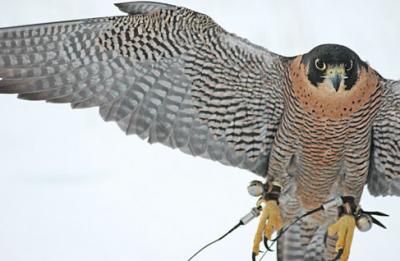
I began flying Kestrels as a teenager in Ohio, dreaming of the day I could hunt game with a Peregrine, like Sam in the book, My Side of the Mountain by Jean Craighead George. Her brothers, John and Frank Craighead, were the pioneers of American falconry, sparking the interest of countless people like me. Eventually my dream came true, when I spent a day in the field with John Craighead and family last fall, hunting pheasants with my Peregrine.
Early history of the sport of falconry is sketchy, but it probably started in China, Arabia, Persia, and India around 2000 BC. Popular thinking is that people figured out that raptors could be trained to capture animals for human consumption. So, the oldest sport in the world began and persisted.
The sport reached a peak in the Middle Ages of Europe in 500-1600 AD, during which time raptors earned a new level of reverence, popularity, and protection for a century. Falconry was considered the “sport of kings;” strict ownership laws governed the “noble hawks” that were regarded as the most cherished possession of the aristocracy. Yet falconry was a part of daily life for everyone. The caste system divided the population into strict classes, from lowly knave, peasant and serf, to clergy and landowner, and finally royalty. “The Laws of Ownership dictated falconry,” and the particular species and even the sex of the birds to be kept depended on social rank. Only kings were allowed to keep the ultimate bird, a Gyrfalcon. The prince, duke, earl, and baron kept a Peregrine, the yeoman and poorman a Goshawk, and knave a Kestrel.
This great respect for the raptor diminished in the early 1600’s when the feudal system dissolved, and land was cleared for agriculture. Effective firearms were perfected, and shooting became the predominant sport. Suddenly raptors were in direct competition with gun hunter. Extensive land closures made falconry difficult. As a result, birds were shot, trapped, and nests were destroyed. In the U.S. bounties were paid; shooting hawks along migration routes became a popular pastime. The war on raptors continued until recent times, and now they are offered full protection by law.
The sport of falconry is heavily regulated in the U.S., and it is perceived by many to be a difficult sport only for the most dedicated. The mantra might be “patience, perseverance, and progress.” Emotions from the falconer range from bitter dejection to utter elation. Birds may miss an easy target, be lost, killed, or may score after an astounding aerial display.
The basic training methods and equipment for falconry are practically unchanged over thousands of years; jesses and leashes, bells and hoods, block and bow perches, depending on the bird, are still standard. Twentieth century renovations include breeding birds in captivity for use in the sport, radio telemetry for tracking lost birds, and the use of synthetic materials in equipment. Another recent innovation is the training of falcons using kites or helium balloons adorned with quail. This is a non-traditional tactic but often very effective at getting a bird to rise very high in a short amount of time.
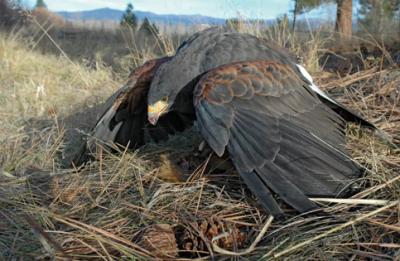
The novice (at least 14 years of age) begins with a two-year apprenticeship, sponsored by a Master falconer. He or she must pass a comprehensive written exam, build a secure and adequate enclosure or “mews,” and obtain the required equipment. Inspection is by State Fish, Wildlife and Parks game wardens. Then one is allowed to trap a wild bird during a specified season. In most of the United States only an American Kestrel or young Red-tailed Hawk can be captured. These birds are plentiful and are quite often returned to the wild when the apprenticeship is completed.
After at least two years as an Apprentice, the next class is General, and at that point up to two birds of any species may be held. Only young birds either from the nest (“eyasses”) or birds in their first autumn may be taken. These are called “passage” birds, as they are often moving through in migration. An adult, called a “haggard,” has different plumage and/or skin color and cannot be removed from the wild.
After five years as General, the falconer can get a Master license, which allows him or her to keep up to three birds. Both General and Master falconers can purchase birds that are bred in captivity for the sport. Hybrids between various falcon species are common, the most popular being a Gyrfalcon/Peregrine cross. Young birds that have been raised by people are called imprints, and they can become quite loyal and even affectionate. However, they may also be overly vocal and scream when they see their “parent.” For that reason, many falconers prefer that other birds in the breeding chamber raise the youngsters. At this time in Montana, all Peregrines used for falconry must have been bred in captivity. This however may change, as Peregrines were recently removed from the endangered species list; thus a Peregrine “take” from the wild will probably resume in the future.
Falconers must purchase game bird permits like those required of gun hunters; however, either sex bird may be harvested. It would be impossible to train a hawk to just kill male pheasants and not hens. The season dates are the same for waterfowl, but longer for upland game birds. The season begins September 1st and ends March 31st, seven months total. In Montana, non-protected mammals, such as rabbits and squirrels, may be hunted year around. The summer months, however, are reserved for molt as resident raptors grow new feathers and get fat with a lush diet. Both bird and trainer take a hiatus from hunting.
The basic premise in falconry is reward for positive behavior—i.e. food. So the answer to the eternal question “Why do they come back?” is simple. They are hungry. But there is a fine line between keeping a bird “sharp set”—or at a great flying weight—to being so famished that it will be weakened. The reverse is also a problem. If the birds are so overweight, they will have no incentive to behave and may go perch in a tree for a day or two. When things go well, the trained raptor will step off the kill for an especially tempting tidbit, at which point the handler can enjoy the game as a meal. This is truly hunting with a companion, with the hawk doing the work.
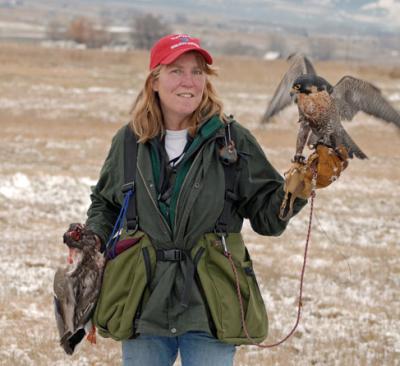
Falconers distinguish between a “short-wing” or hawk, and “long-wing” or falcon. Hunting methods vary between the two, and there is often a rivalry and contention between practitioners on each side. Hawk versus Falcon may be likened to PC versus Macintosh, or NASCAR versus Formula One! Each faction will forever disagree as to which style of hunting is better, but both are equally exhilarating.
People who hunt with hawks are called “austringers;” their birds often fly right off the glove at lightning speed when game is spotted. Or they may follow along perching in the treetops or on power poles. Harris’s Hawks are especially effective hunting from a T-perch held high overhead, with even a dozen birds hunting together cooperatively. Hawks tend to hit ground quarry, such as rabbits, squirrels in trees, or birds as they take off from the ground.
However, a well-behaved falcon will get high overhead, perhaps over 1,000 feet up and invisible without binoculars. The bird will cue on the trainer (and usually dog) who is flushing game, which will be struck and knocked out of the air. These downward stoops have been clocked at over 200 mph, the record an astounding 353 mph set by a trained Gyrfalcon. Coming out of a stoop, they can pull 25 G’s, able to handle the highest forces in nature for a large animal. (This is a measurement of acceleration in relation to the earth’s gravity. So it’s like having 25 times the force of gravity pushing on a body, which would kill a human.) Falcons have been seen to knock the heads off ducks in mid-air with a terrific blow or fly underneath a grouse or pheasant to grab the softer underside and take it to the ground. Unlike other forms of hunting, falconry can be quite the spectator sport, and an unforgettable sight is often met with loud cheers. It also rarely leaves injured game in the field—falcons either kill or miss.
Large falcons need wide open spaces for flying, which limits the sport in much of the country. However, Merlins and Sharp-shinned Hawks may be flown on starlings in cow pastures, and Kestrels may hunt out of the window of the car after House Sparrows in urban alleys. No matter what the tactic, the sport is very time-consuming, and the joke is that falconers are somewhat insane. For the ardent falconer it is a lifestyle.
There are about 5,000 licensed falconers in the United States today, 10,000 worldwide, and obviously no longer the sport of just kings. In Montana, 93 people have licenses: 62 Master, 23 General, and 8 Apprentices. The biggest demographic increase in the United States has been for women. Females, now taking their place in the formally men’s club of falconry, are holding their own. The sport has endured and will certainly have devoted participants as long as raptor and quarry exist.
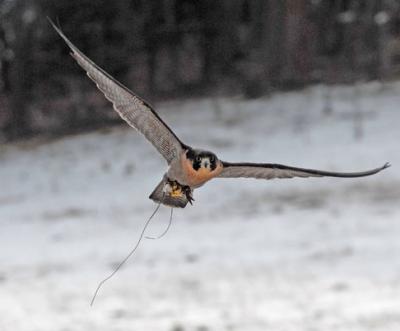
My five-year-old Peregrine Sibley has dazzled us the last few years with high stoops on ducks and pheasants and even starred in a show for Ducks Unlimited Television last year. On the second day of filming, she knocked a hen mallard into the water, which was retrieved by my friend’s English Setter, Rio. She then flew down to literally yank the bird out of Rio’s mouth with a protest and off ran the dog (for two hours). She also exhibits playful behavior in the field. On her exercise grounds, she occasionally steals hats off spectators’ heads to present to them in subsequent fly-bys. My Harris’s Hawk, Deja, has gotten adept at catching Eastern Fox Squirrels, but smacked a wild turkey last spring just for spite. I heard a thunk, and ran down the hill to find the hawk and turkey in a stare-down. Never a dull moment.
These birds are two of the 18 that live with us on the banks of the Bitterroot River in Florence. I began an educational program called Raptors of the Rockies nearly two decades ago. The other resident raptors have injuries that prevent them from being released back to the wild, so they join me as ambassadors in presentations around the western part of the state and Idaho. We have provided 1,100 programs for 117 schools, as well as public and private gatherings. My richest and most memorable experiences have been with these birds. I feel privileged to lead this lifestyle.
Resident raptors are the source for Kate’s depictions in drawings, etchings, monotype prints, paintings and clay and welded steel sculptures. She has written two raptor books, and the second called Falcons of North America will be out in the spring of 2008. Visit her Web site www.raptorsoftherockies.org.
~ Kate Davis first began rehabilitating orphaned and injured birds and mammals in 1973 with the Cincinnati Zoo Junior Zoologists’ Club. She also pursued education, art, and taxidermy. After locating in Missoula in 1978, Kate received a degree in Zoology from the University of Montana in 1982. She moved to a ranch near Missoula in 1988, and obtained the required federal and state permits to care for the rehabilitation, program, and falconry birds. Audience numbers are now approaching 100,000 participants in their 20th year.


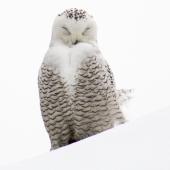
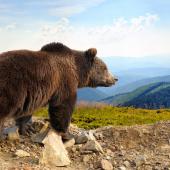
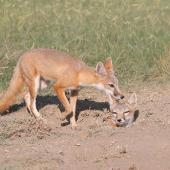
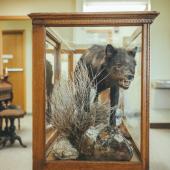
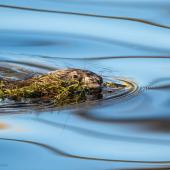
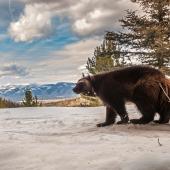
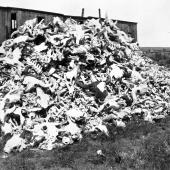

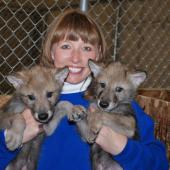

Leave a Comment Here